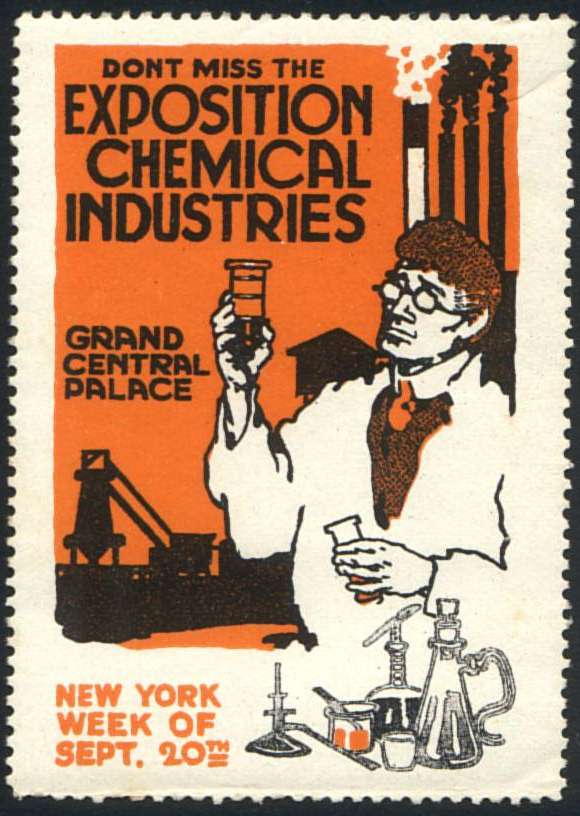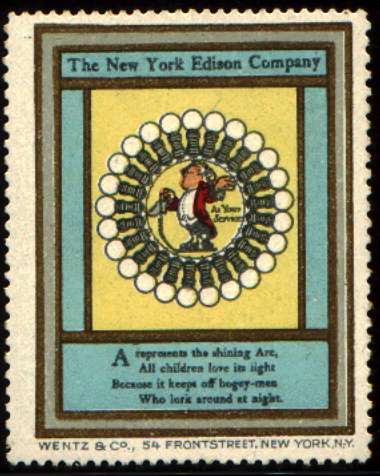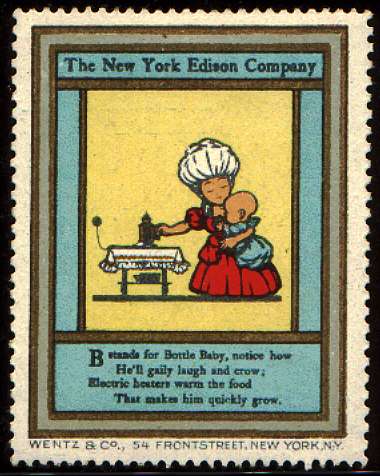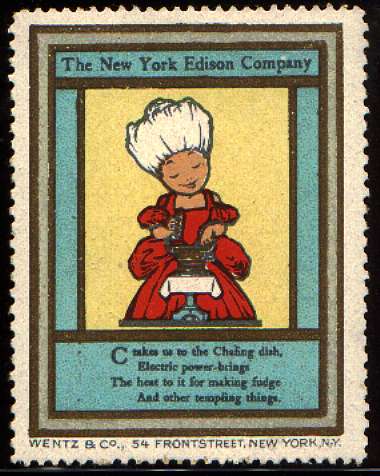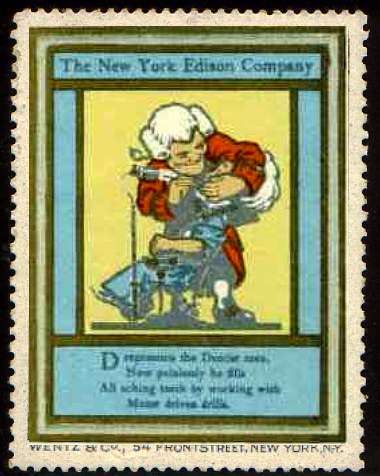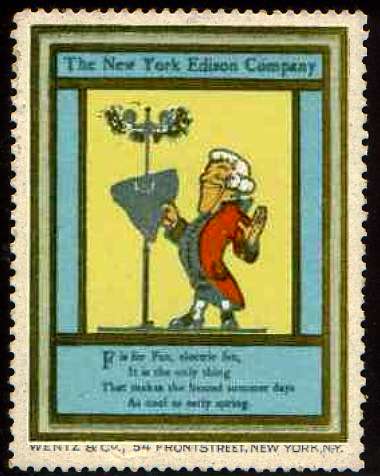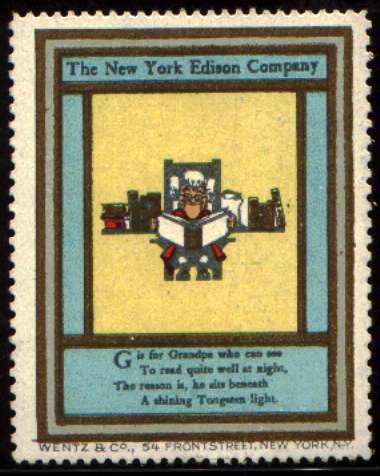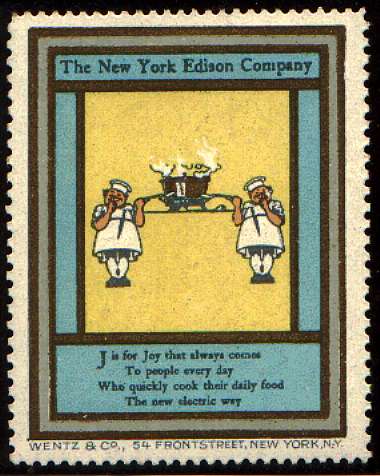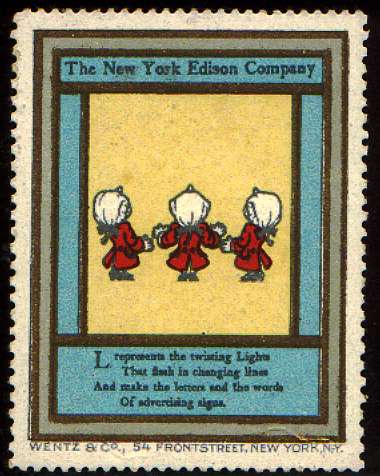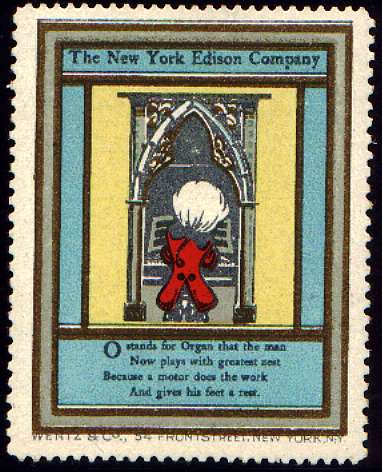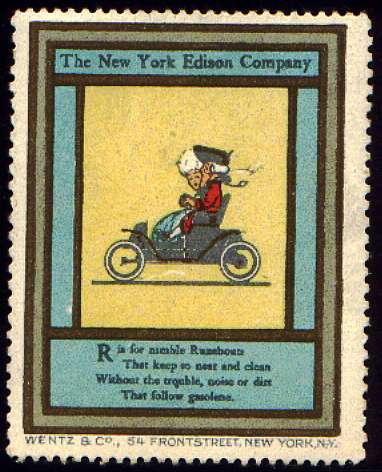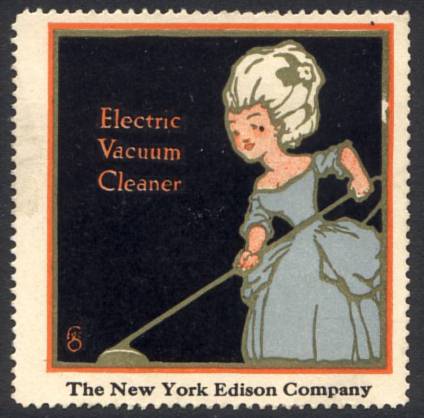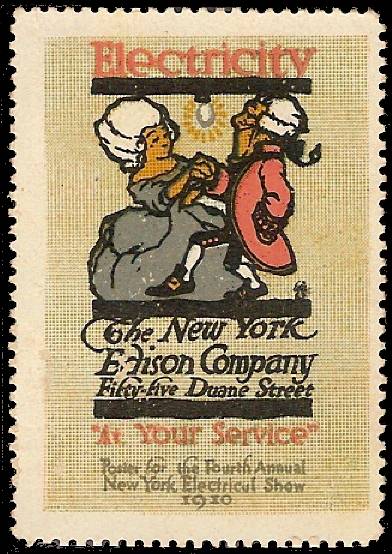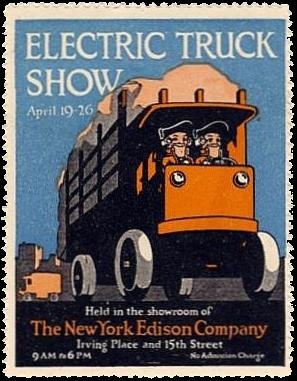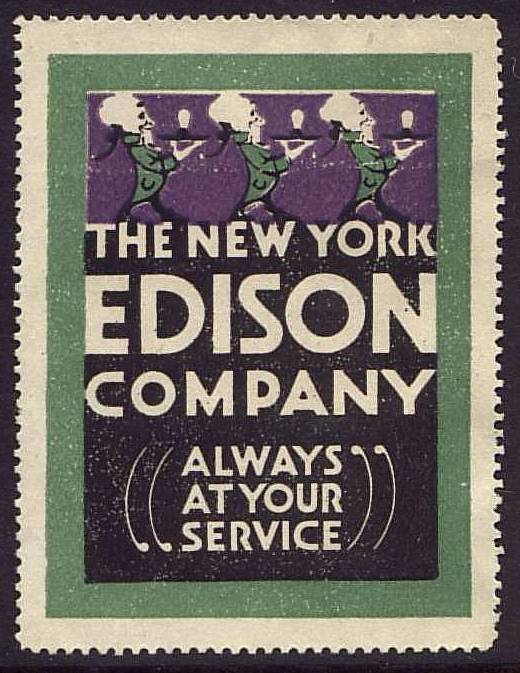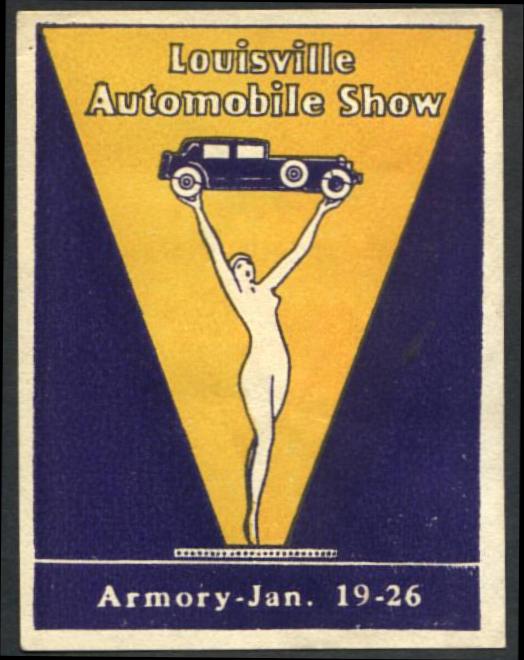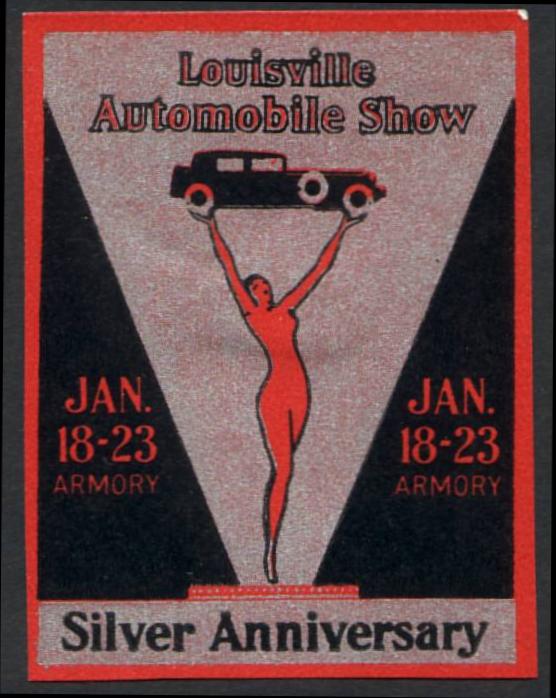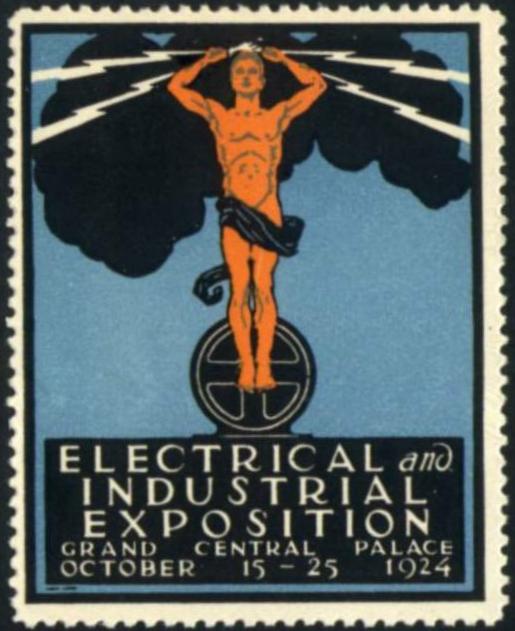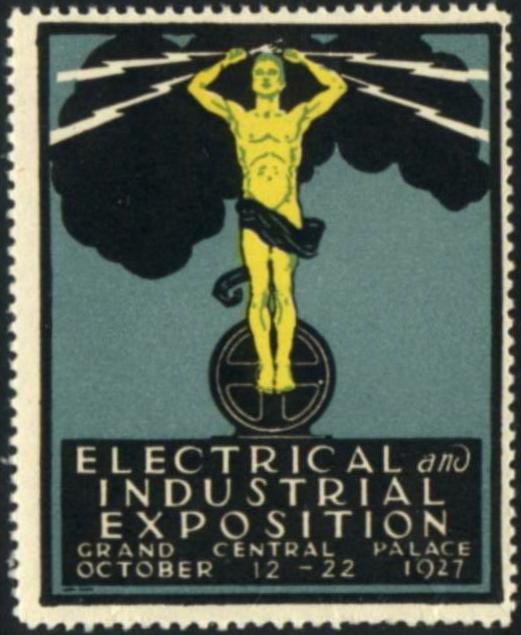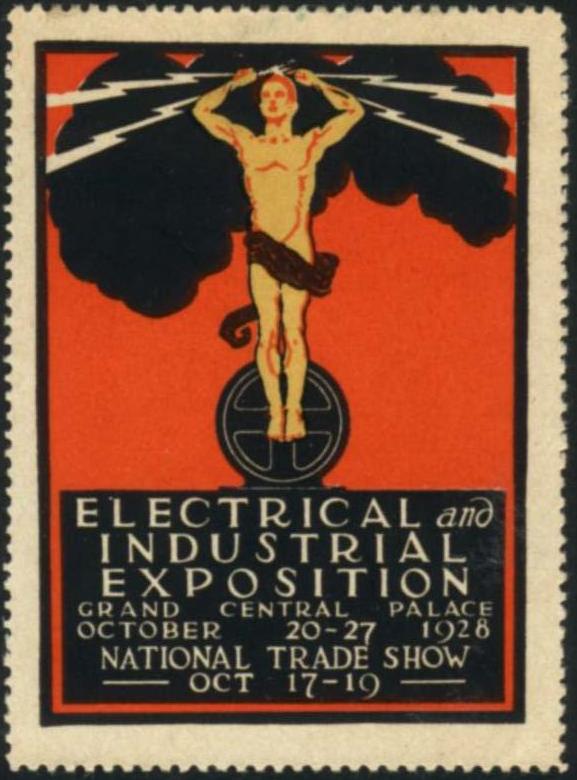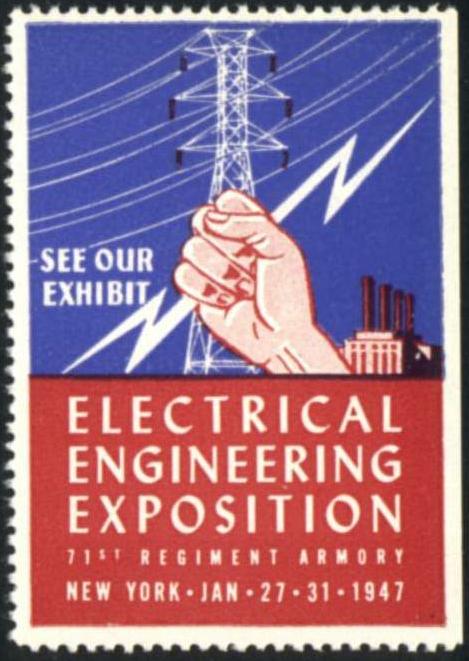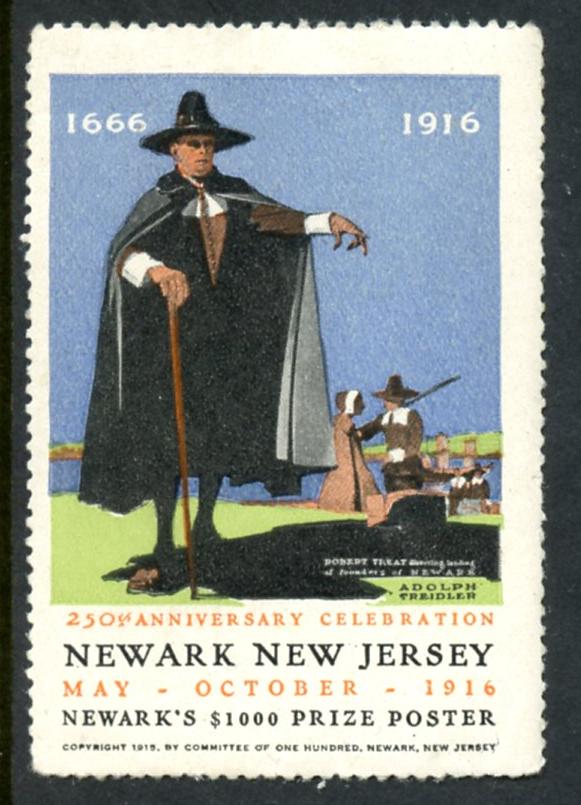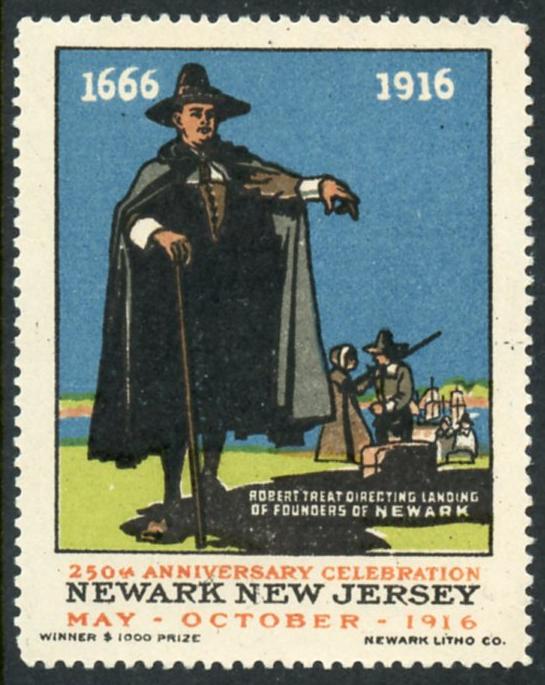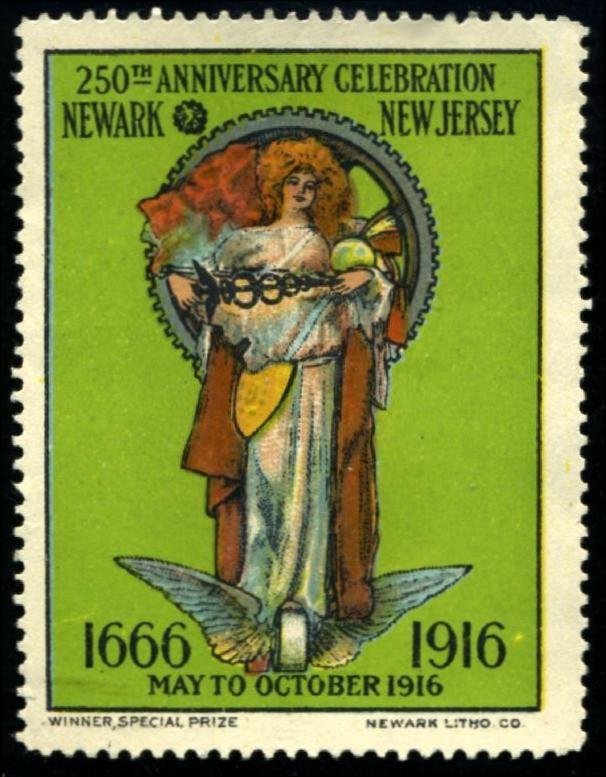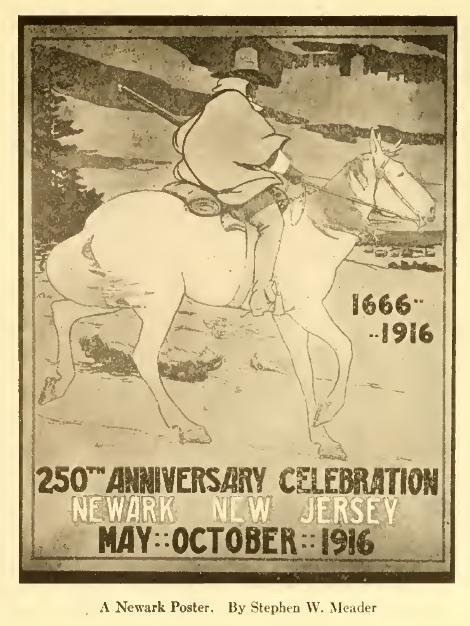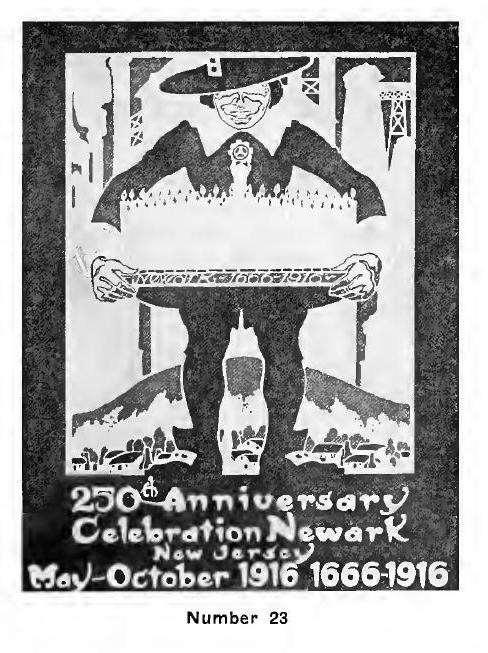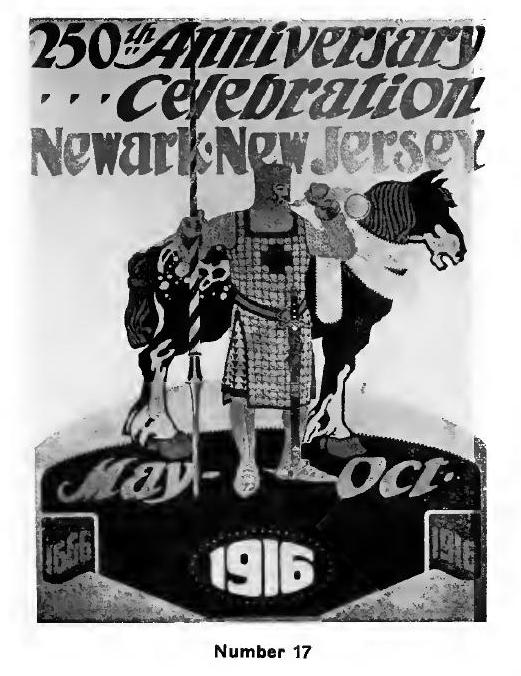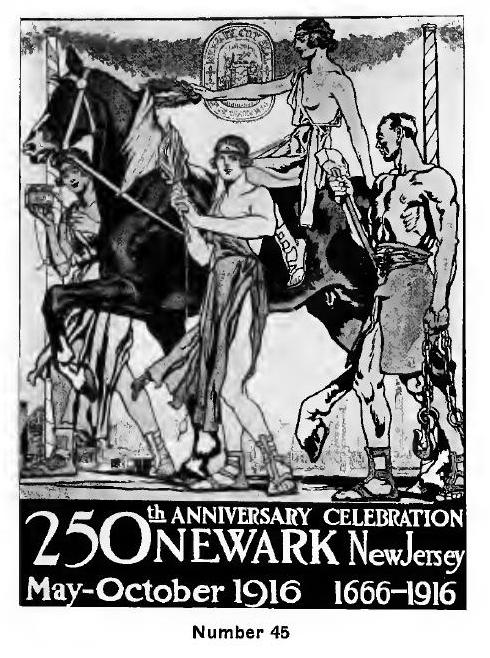

Poster Stamps
Poster stamps are a subset of Cinderella stamps.
A Cinderella stamp is essentially any stamp not produced by a
government for
use as postage,
so it includes advertising stamps, charity seals such as Christmas and Easter
seals,
and officially-issued stamps such as tax stamps, telegraph stamps and locals.
Poster stamps are advertising stamps, and usually poster-like in their
appearance. Click
HERE to see my pages on ALL of the
Poster Stamps of the Olympic Games.
Many are indeed just reduced versions of actual posters, and were issued in
conjunction with the events for which the posters were produced. The image
below,
for
the 1932 Olympics Games in Los Angeles, was produced as a poster, post card,
stamp,
envelope cachet, lapel pin, program cover, etc. Even in 1932 the Olympics were
already big
business, and heavily marketed!
(Click on any image to see a higher-resolution version.)

there are few catalogs of what exists, so one cannot buy albums or
checklists and pursue a "complete" collection.
Like rare butterflies or UFO's, one pursues elusive items merely on hope,
spurred on by reports of rare "sightings".
My own favorite poster stamps fall into various categories, such as trains, olympics, multi-language sets, and multi-year sets.
Multi-language sets
twentieth century, when large international fairs were very popular.
For most of those fairs, poster stamps were issued both as advertising
and as souvenirs, and printed in all the major languages of the world.
LEIPZIG BOOK EXPOSITION - The BUGRA - 1914
The set below is popular for its exceptional design. To date I have found thirteen different languages, and seventeen distinct versions, plus several varieties. There are five additional variations with black borders. Note that one of the stamps in Chinese has the language (in German) printed in the selvage, which leads me to wonder how these were issued - did a sheet have all stamps of the same language, or did it have one each of every language? Or did they put the language next to the Chinese stamp just so people would know what it was?
Answers to most of these questions, images of most of the stamps, and much more about the Bugra HERE!

German --- German --- German --- Chinese --- Chinese

German --- German --- Spanish --- Italian --- Russian

French --- French --- English --- English --- Japanese

Esperanto --- Portuguese --- Dutch --- Swedish --- Danish
7/11/2010 - I have created a separate set of pages about the stamps above and the Leipzig Expo of 1914 - the Bugra - CLICK HERE.
MULTI-YEAR SETS
why not use it over and over again?
That seems to have been the philosophy of the promoters
of the fairs for the sets shown below, and I enjoy trying to find all the versions.
========================
NATIONAL EXPOSITION OF POWER AND MECHANICAL ENGINEERING
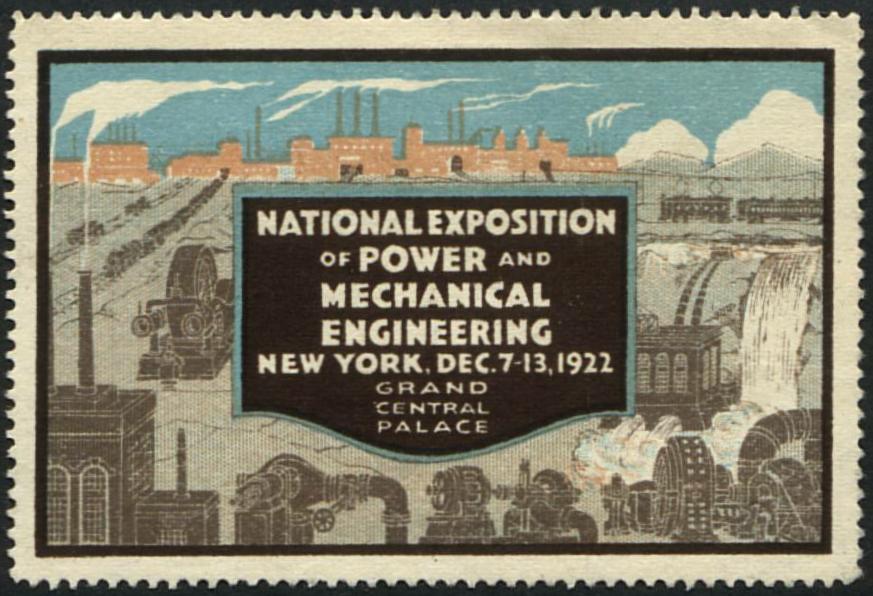
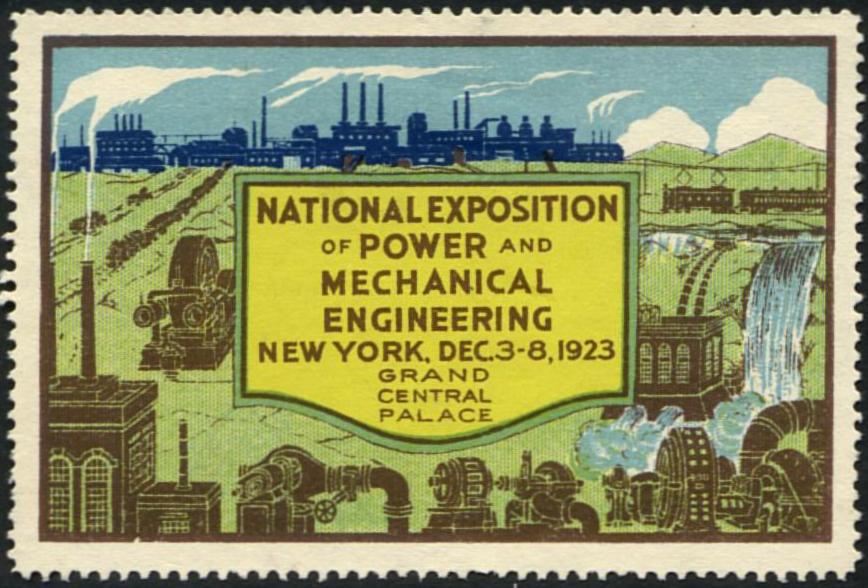

1922 ... 1923 ... 1924
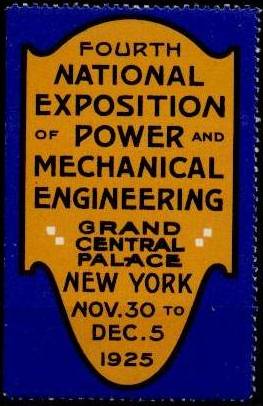
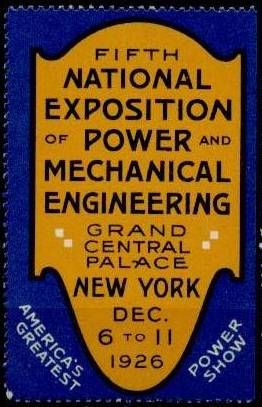

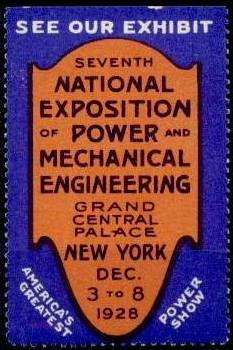
1925 ... 1926 ... 1927 ... 1928
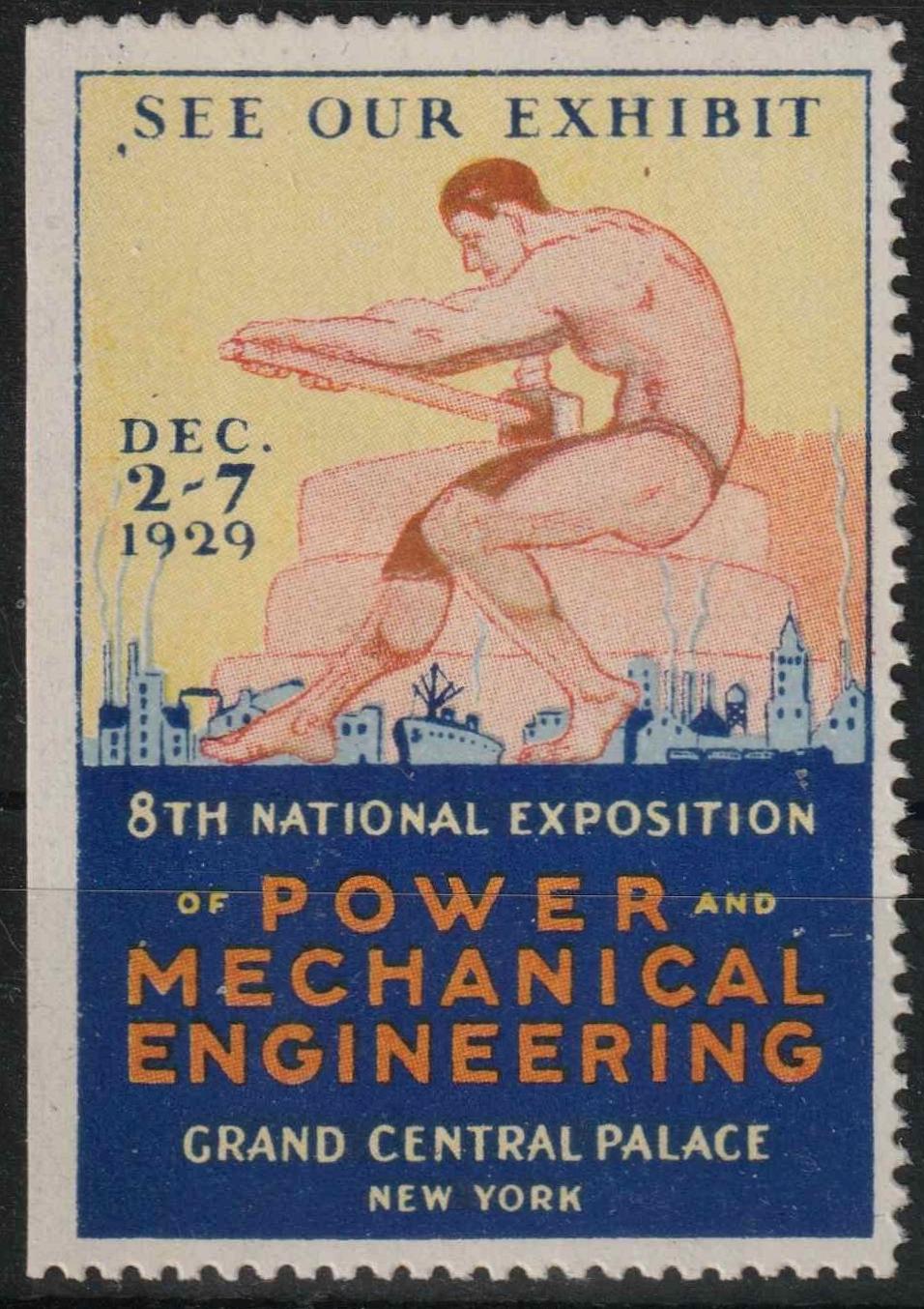
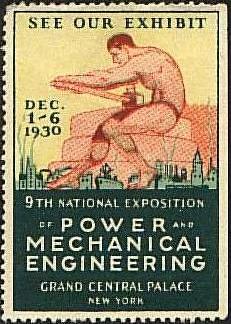

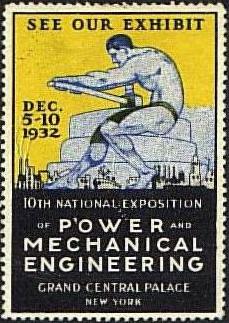
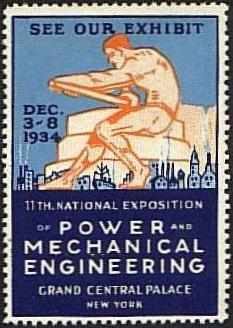
1929 ... 1930 ... 1930a ... 1932 ... 1934
(N.A.P.E. = National Association of Power Engineers)
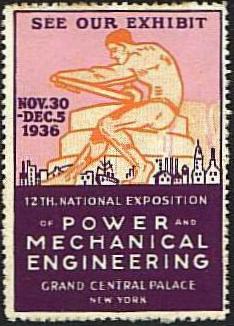


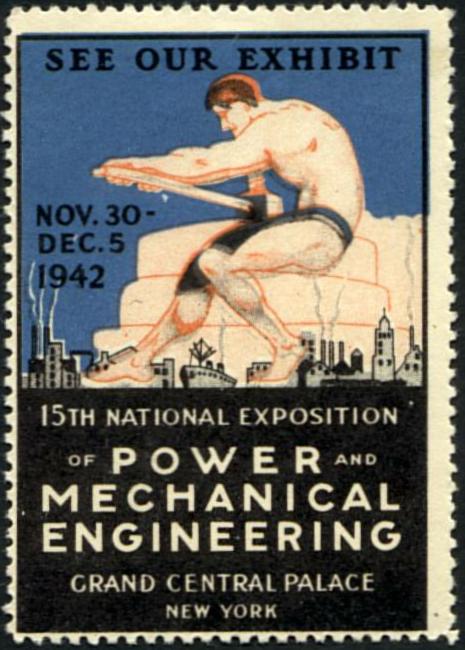

1936 ... 1938 ... 1940 ... 1942 ... 1942a
What happened in 1942? Different venues on the two stamps.



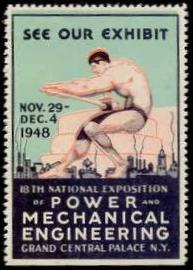

1944 ... 1946 ... 1946a ... 1948 ... 1950
Second stamp for 1946 is a missing color variety - no pink!
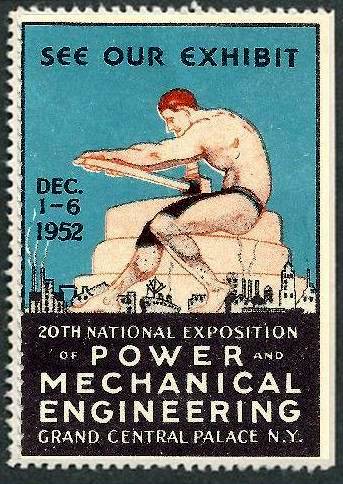
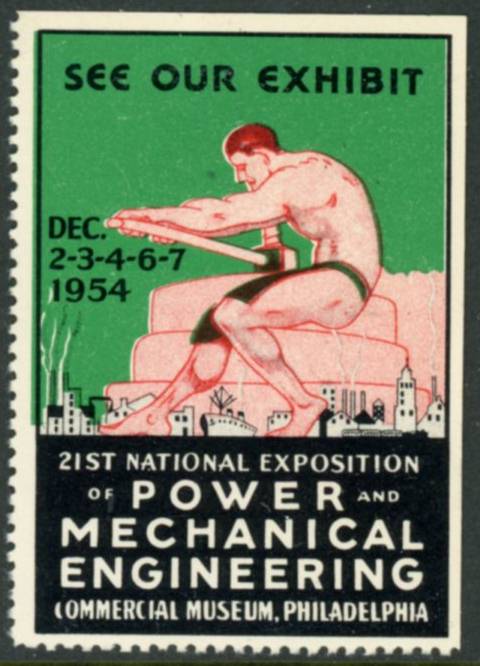
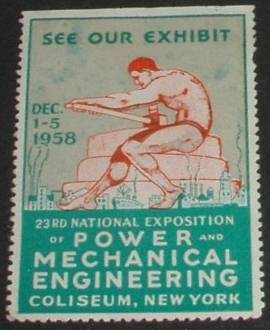
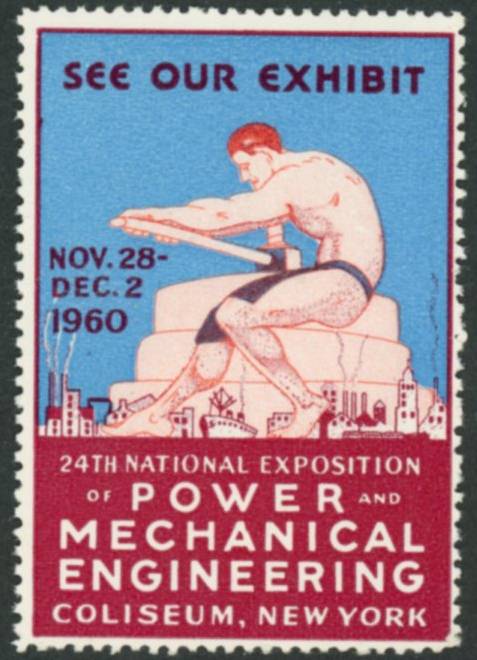
1952 ... 1954 ... 1958 ... 1960
Grand Central Palace closed in 1953, prompting the move to Philadelphia
for the 1954 show.
Can you find the train in the stamps for 1929, 1930, and 1932 of the set
above?
That was their initial appeal to me, but now I'm curious how many years the
design was used.
I have all the stamps from 1922 through 1942, as indicated by the ordinal
numbers, starting with 1925 - the Fourth show.
Note that the train disappears from
the stamps for 1934 through 1940, but in 1942 the train is back!
Was there a show in 1944? Probably not, WWII. But after? Stay tuned.
8/23/2009 = Roger Riga found two more! 1944 and 1948, answering the question
about
a show so late in the war. It does look a bit austere, though.
Looking through my collection recently I noticed the three seemingly related
stamps below, for a similar show held in Chicago.
Two of the shows are in the same years as the National
shows, suggesting that the concept was popular at the time.
The designs are all different,
but all three include a train, which is why I acquired them.
========================
CHEMICAL INDUSTRIES EXPOSITION
One of the longest-running U.S. sets of poster stamps is those issued for
the
Chemical Industries Exposition, later called Chem Show.
Chem Show held its final exhibition, at the Javits Center in New York, in 2019.
Here is a link to anarticle about the show in 2017:
"Chem Show".
I have created a separate page for that set, as they have become an
obsession.
One even thas a train! GO HERE.
========================
CHICAGO INTERNATIONAL LIVE STOCK EXPOSITION
Click here to access my web page about what may be the longest multi-
year
set
in the US, the poster stamps created to advertise the Chicago International Live
Stock Exposition.
========================
SWEDISH INDUSTRIES FAIR
The above stamp, for the Swedish Industries Fair in Göteborg, Sweden, is a
favorite of
mine,
both for the design, and the fact that it is the first of a set that spans fifty
years, 1918-1968!
In this case the set clearly spans the War, with some design modifications, and
there are four
different languages for some of the early years, so there could be many more
in the
complete
set.
For some history of the event - click here.
It was last held in 1973, though the name survives in the form of an exhibition
center.
I own or have seen stamps for every year from 1918 through 1950, EXCEPT the
following: 1923,
1941, 1942.
Click on the image above to see tham all.
I suspect there are additional languages for some of the years. If you can
fill
in any of the gaps with information or scans, please email the webmaster at
posterstampcc@gmail.com
AN ALPHABET SET!
An alphabet is an old reliable concept for presenting a topic in an entertaining
way
(as my web site itself attests!), and has been used on poster stamps, of
course.
The set
below, designed by F. G. Cooper, for New York Edison in 1913 to promote
electricity,
is quaint and charming today, when we are exhorted to use LESS, not more, and
electrical
conveniences are so much taken for granted that it is hard to imagine a time
when
they were
a novelty, and people had to be persuaded to try them.
These were issued with four different background colors, and both with and without the printer's monogram at bottom.
For images of all four, plus some thoughts on their printing formatCLICK HERE.
In case you prefer to save your eyes from the torture of trying to make out the
text on
the set above,
here it is all on
one
page.
10/13/07 - I just acquired this new group of twelve New York Edison poster
stamps Note that all the stamps in this set have the artist's monogram/signature on
them -
I can't decide which set was produced first.
I suspect the A-to-Z set was produced later, though. If anyone out there has a better argument, send it to the webmaster -
Below are three more New York Edison advertising stamps from the same period,
and
by the same designer, F G Cooper.
And finally, here are four more designs that look like Cooper's work, for
the
According to THIS PAGE
He was a prolific illustrator, designer, and calligrapher, whose work is still
considered inspirational by modern designers.
07/05/2014 - CLICK
HERE
for my new pages about ALL the poster stamps of F G Cooper.
with a similar concept, to show all the ways the new marvel, electricity,
could be
used
to make life easier and more pleasant.
The figures are almost identical on both - those hairdos!
And comparing the autos, the irons, and the vacuums,
there's nothing that looks more modern about either.
Someone saw the first set and said, "You could do one for each letter of the
alphabet!"
posterstampcc@gmail.com
German company
AEG (Allgemeine Eliktrizit tsgesellschaft), another producer of electrical
appliances.
F. G. Cooper (a native of Oregon) arrived in New York City in 1904, and began
a
lengthy career as a freelance designer and illustrator that would include a
fifty
year association with New York Edison (later ConEd), creating posters, ads,
calendars -basically a visual identity - for the company.
LOUISVILLE AUTOMOBILE SHOW
The set above are Queens of the Poster Stamp world, both for their
striking graphic artistry, and for their use of the female figure.
Unfortunately, none has a year date, so all I can say about
their dates of issue is that I suspect it is in the 19-teens.
6/19/15 - I just found a source on the www that says the 15th show was in
1923,
so the 25th (silver anniversary) would have been 1933, moving these into the
30's,
and that makes sense, given the stamps' art-deco style.
ELECTRICAL AND INDUSTRIAL EXPOSITION
This set illustrates one of the effects of scientific and technical progress
during the twentieth century.
These technologies were thought of as closely
related in their infancy. Today no one would think to connect them.
The last item illustrates this divergence.
NEWARK 250th ANNIVERSARY
1916 was the 250th anniversary of the founding of Newark, New Jersey.
They celebrated in a big way, including a
prestigious competition
for the best advertising poster design.
And because it was the height of the poster stamp craze,
the winning designs were produced as poster stamps as well.
OFFICIAL POSTER
Though I couldn't find the story of this first design,
I believe it was commissioned before the contest as the "official"
advance notice of the event. I love its bold colors and simple design,
which work very well on a stamp.
================
POSTER CONTEST WINNERS
1st Prize
======
Special award - audience favorite
======
OTHER POSTERS
Second prize - why was this one not produced as a poster stamp? I think I know.
======
Other entries that I like:
MORE ABOUT NEWARK's 250th ANNIVERSARY:
Newark history website: http://www.virtualnewarknj.com/events/250aniv/ccm250th.htm
Book about the posters: https://archive.org/details/cu31924015458197
Official Guide to the celebration: https://archive.org/details/officialguideman00comm
Click here
to access my web pages of classic German poster stamps, as originally pubished
by
Blogger Frank of Cologne, Germany..
All text Copyright © 2000, William M. Senkus
Send feedback to the webmaster: CLICK HERE
Created -- 06/18/2000
Revised -- 08/07/2025



